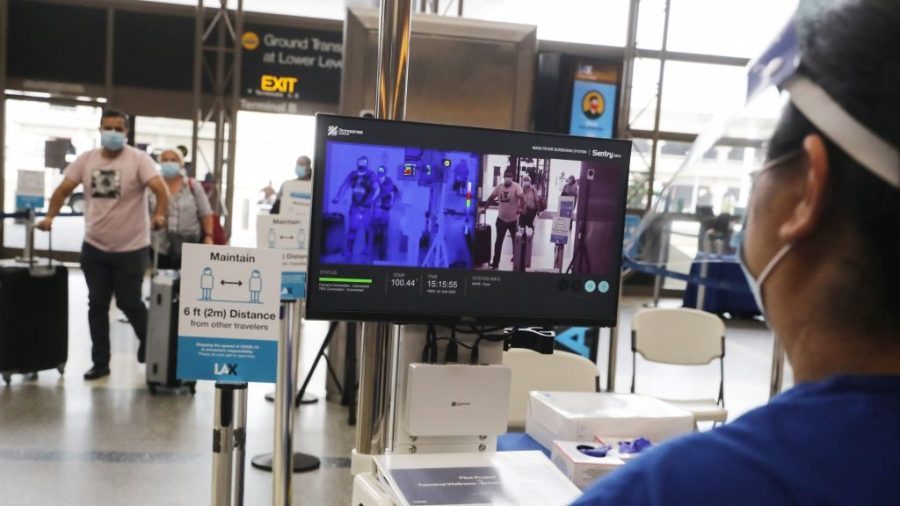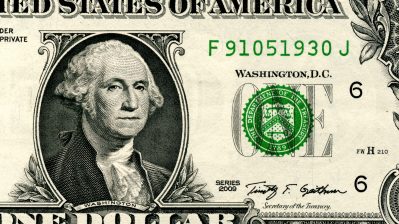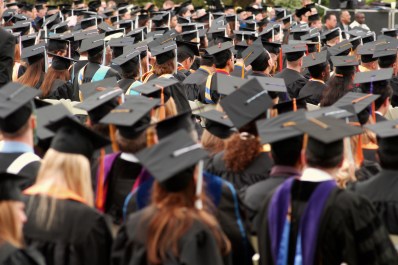Magical fever-spotting cameras, you say? We have questions.

This week on “Marketplace Tech,” we’re reporting on the innovations that will help us transition to a post-pandemic future. Part of that future will eventually involve going back to work, but we’re still working on how to do that safely.
Some companies have spent tens of thousands of dollars on thermal cameras, which can, supposedly, spot someone with an elevated temperature from a distance. Do they work or is this just a form of health security theater? I spoke with Meghan McCarty Carino, who covers workplace culture for Marketplace. The following is an edited transcript of our conversation.

Meghan McCarty Carino: I always think about “Predator” vision when we talk about thermal cameras. This kind of allows for a big, industrial camera that does automated, instant temperature taking by mapping infrared radiation from people’s skin. It’s a lot faster than having a person standing out there with one of those temperature guns taking everyone’s temperature.
Molly Wood: But I understand that it’s not as good as “Predator” vision.
McCarty Carino: I guess it depends what the objective is. If the objective is to stop sick people from coming into your workplace, maybe no, not as successful. There’s a question of accuracy with just how well the devices work. These are generally not medical devices. They are made, by the most part, by security companies. They can be influenced by lots of different things. They take the temperature of the skin on the face — cold or hot weather, that can affect the temperature of one’s skin, or if someone is wearing glasses, or if they have some dampness on their skin, some sweat. All those things can affect the accuracy of the devices.
But the Food and Drug Administration has allowed these devices to be marketed on a temporary basis without any kind of verification of their medical veracity. The companies can basically say whatever they want. The FDA does suggest that if someone is determined to have a temperature with one of these devices, that they get some other secondary verification, using an internal temperature taker, just your regular thermometer. But there’s really nothing requiring these workplaces to do so.
Wood: What other concerns are there around scanning workers constantly in this way?
McCarty Carino: One of the biggest is the fact that these devices generally also come with facial recognition software as part of the deal. If you’re scanning everybody’s temperatures as they walk in the door, you need to to have a way to identify who the people are that are triggering the system so you can identify who to send home. There could be some thorny legal issues. A number of states have started passing these biometric data laws, privacy laws having to do with collecting information about individuals’ fingerprints or their voice. This is something where these systems could kind of become part of a greater surveillance infrastructure. Groups like the American Civil Liberties Union are up in arms about having these installed at, say, all airports and hospitals and all kinds of businesses all over the place.
Wood: If this thermal scanner says that you’re sick and you are sent home, you can’t come to work, will you still be compensated for that time?
McCarty Carino: That is a bit of a question mark. The Coronavirus Aid, Relief and Economic Security Act did provide for two weeks of paid sick leave, but it excluded a lot of people. We’re talking about gig workers. We’re talking about people who work for companies with more than 500 employees or less than 50 employees. So there are a lot of workers who may get sent home and not be able to collect any pay.

Related links: More insight from Molly Wood
In case you missed it, The Atlantic had a piece earlier this week on this idea of health security “theater.” “Hygiene theater” they called it. The idea that focusing on scrubbing everything all the time is like the COVID-19-era version of expanded Transportation Security Administration screenings that end up wasting a bunch of time and resources and don’t necessarily address the actions that could really make a difference. In the case of coronavirus, focusing on, say, universal mask wearing and limiting large indoor gatherings.
There is also a collection of studies about the use of masks in preventing the spread of COVID-19 that addresses some of the false claims about masks that have spread on social media. It makes it clear that a meta-analysis of science determines that yes, masks, even simple cloth ones, are effective at slowing the spread of the virus. Good science can’t be repeated often enough.
The future of this podcast starts with you.
Every day, the “Marketplace Tech” team demystifies the digital economy with stories that explore more than just Big Tech. We’re committed to covering topics that matter to you and the world around us, diving deep into how technology intersects with climate change, inequity, and disinformation.
As part of a nonprofit newsroom, we’re counting on listeners like you to keep this public service paywall-free and available to all.
Support “Marketplace Tech” in any amount today and become a partner in our mission.


















